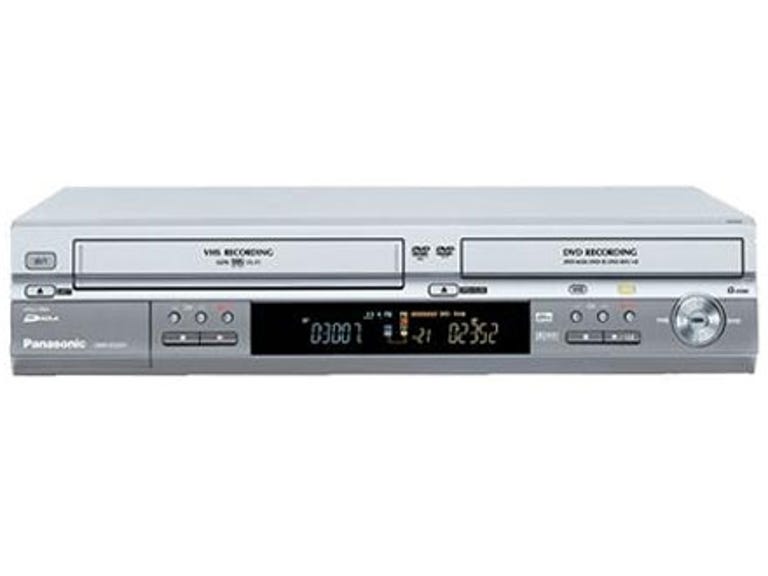 Why You Can Trust CNET
Why You Can Trust CNET Panasonic DMR-ES30V review: Panasonic DMR-ES30V DVD recorder/VCR combo
The DMR-ES30V offers stellar recording quality and dubbing capabilities, but a number of quirks detract from its overall attractiveness
DVD recorders, often equipped with hard drives, are fast replacing the archaic VHS standard when it comes to archiving our favourite TV shows. The reasoning behind this is clear: aside from the obvious picture quality considerations, a stack of DVDs is far more elegant - not to mention more space conscious - than a cabinet full of VHS tapes. However, one roadblock on this upgrade path is what to do with said tape collection once you've discarded your VHS recorder. You could throw them away, or you could transfer them to DVD with the touch of a button using a deck such as the Panasonic DMR-ES30V.
The Good
The Bad
The Bottom Line
Design
Rather than cramming as many buttons onto the front of the device as possible, Panasonic has opted for a far cleaner approach. The left-hand side features play, stop, channel select, eject and record buttons for the VCR, while the right-hand side includes the same functions for controlling the DVD recorder. Additionally, neatly concealed under a flap are A/V inputs for use with a camera, as well as fast-forward/rewind controls for the VCR. Disappointingly, the deck lacks a Firewire input.
Conversely, every millimetre of the remote is dotted with functionality controls, but Panasonic has made a concerted effort to avoid confusion by colouring the buttons based on their functionality. Further, switching between the DVD and VHS modes using the remote is child's play, while the one-touch DVD/VHS dubbing left us in awe.
Features
The device supports every conceivable media type except DVD+RW, but it's most effective with DVD-RAM discs. With DVD-RAM, programs can be watched whilst they're being recorded (also known as chasing playback), as well as split into chapters for easy navigation and playlist creation. However, with all other media editing options are limited to little more than changing the title of the recording. The inability to create chapter stops unless DVD-RAM media is used is a particularly disappointing over-sight, as this makes navigating recordings both slow and tedious.
TV junkies will appreciate the fact that the DMR-ES30V and its dual tuners can record two television programs simultaneously - one to DVD and another to a VHS tape. Users can also select recording modes between one and eight hours, and the unit will automatically adjust the picture quality and compression rates accordingly.
Connectivity options are plentiful and line the rear of the device in certain groupings. There's composite, component (capable of progressive-scan) and S-Video outputs; A/V inputs with S-Video; and a digital audio output (optical). Of course, there are also RF ports and regular composite outputs. Two notable omissions are a coaxial digital audio output and a Firewire input.
Performance
Dubbing from VHS to DVD noticeably increases picture quality - particularly colour saturation and contrast - and no noise or artefacts were added during the process. Those expecting true DVD quality will inevitably be disappointed, but we found that the two hour recording mode produced the best results for VHS dubbing.
Video recorded directly from TV to DVD is crystal clear - even when using the four hour LP mode. Unsurprisingly, the one and two hour recording modes were also stellar with their higher resolution, but anything above four hours and quality declines significantly.
Despite its amazing picture quality, one aspect that disappointed us was the menu system. Not only is it aesthetically primitive, but users are forced to unnecessarily dig around the menus for many settings that should pop up automatically. For example, when recording to a disc, 'recording speed' options aren't displayed automatically, so you've got to traverse the menu system to adjust this option before hitting record. The same issue occurs when it comes to creating menus and thumbnail chapters, as mentioned above.
If you're mainly using DVD-RAM media and don't mind reading the manual to work out the intricacies of the menu system, the Panasonic DMR-ES30V is a highly effective and easy-to-use tool for converting your old VHS archives to DVD.
